Today I’ll review the Minolta Freedom Zoom 160 Date, a camera that was set out to solve the problem of autofocus in point & shoot film cameras. Out of focus pictures have always been a major problem with film any point & shoot camera. Unlike an SLR with the ability to give you a preview of the final result, with a compact camera, in-focus pictures rely heavily on the autofocus mechanism. While the autofocus system in compact cameras has gotten better over time, mis-focusing is still unfortunately inevitable.
The Freedom Zoom 160 was the last point & shoot produced by Minolta in the early 2000’s. It was introduced shortly just before the company merged with Konica to become the Konica Minolta we know today as a company that makes printers. Just like many other cameras, this gem has been under the radar for quite sometimes due to it being a zoom lens. Although it appears that the Minolta Freedom Zoom 160 has started to gain traction as more people come to realise the capabilities this camera holds.
The Design and Build Quality
I think we can all agree that the Minolta Freedom Zoom 160 has a beautiful minimalist design. The matte silver finish is both subtle yet striking to the eyes. Every element and control was arranged strategically so that the operation of this camera felt natural. The camera has a matte aluminum front shell that wraps around the sides, the back construction is plastic.
I can not express how high class the metal feels, it has a very fine coarse texture that’s smooth to the touch. Even though this camera is in the super-zoom class, it’s very compact and can be easily carried everywhere.
The build quality of this camera is incredible, all the buttons are clicky, solid and respond very well to every press. The noise it makes is very pleasing and it’s very quiet. Overall the camera feels great and secure in the hands.
The Basic Features
The Freedom Zoom 160 is one of a very few cameras that can date up to the year ‘99 so it’s perfect for anyone who likes to imprint date on their photos. This camera has every shooting mode to accommodate daily shooting such as flash off, slow sync, redeye, self-timer, continuous drive, etc… with an addition of +1.5 exposure compensation. This camera does not have an infinity focus mode like the Canon Sure Shot Z155, I believe this is intentional and you will understand why in the latter part of this review.
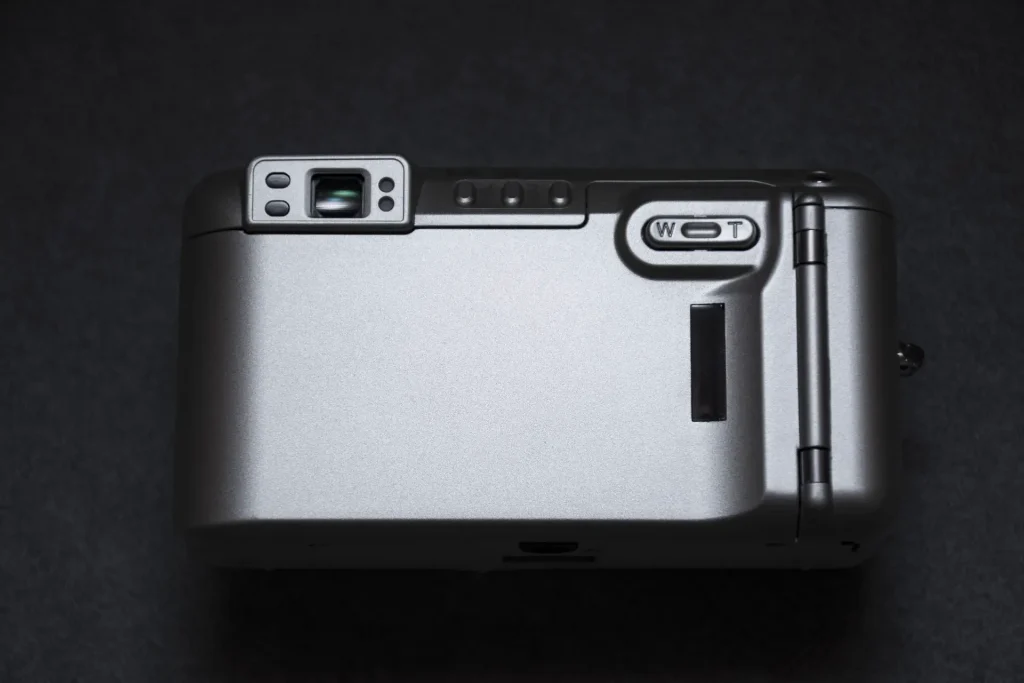
The Metering and Focusing System
The focusing system on the Minolta Freedom 160 is highly sophisticated and it’s the sole thing that makes this camera stand out from the rest. The focusing system is called Area AF, this feature was advertised by an iridescent logo in the front of the camera. The focusing system was a vast improvement over anything ever presented on a film camera. Not only was the Freedom Zoom 160 the first camera to recognize human subjects but it also has the largest focus detection area in a film camera.
Of course, I wouldn’t be talking about these impressive technologies if they don’t affect the shooting experience. The viewfinder of the Minolta Freedom Zoom 160 will certainly blow your mind the first time you put it up to your eyes. The camera knows when you put your eyes on the viewfinder and it gives you a live update of what is currently being focused as you compose. The way the viewfinder works is that it’s no different than a viewfinder of a point & shoot, but there will be bright red lines very similar to the autofocus points in an optical viewfinder of a DSLR.
This viewfinder is a game changer as with most compact cameras, you don’t know what the camera is focusing which may result in an out of focus subject. The Freedom 160 let you know exactly what the camera is focusing on. Also if you are close to your subject, a red dotted line will light up to remind you to compensate for parallax error, extremely useful. The focus guidelines are completely invisible when they are not lighted up.
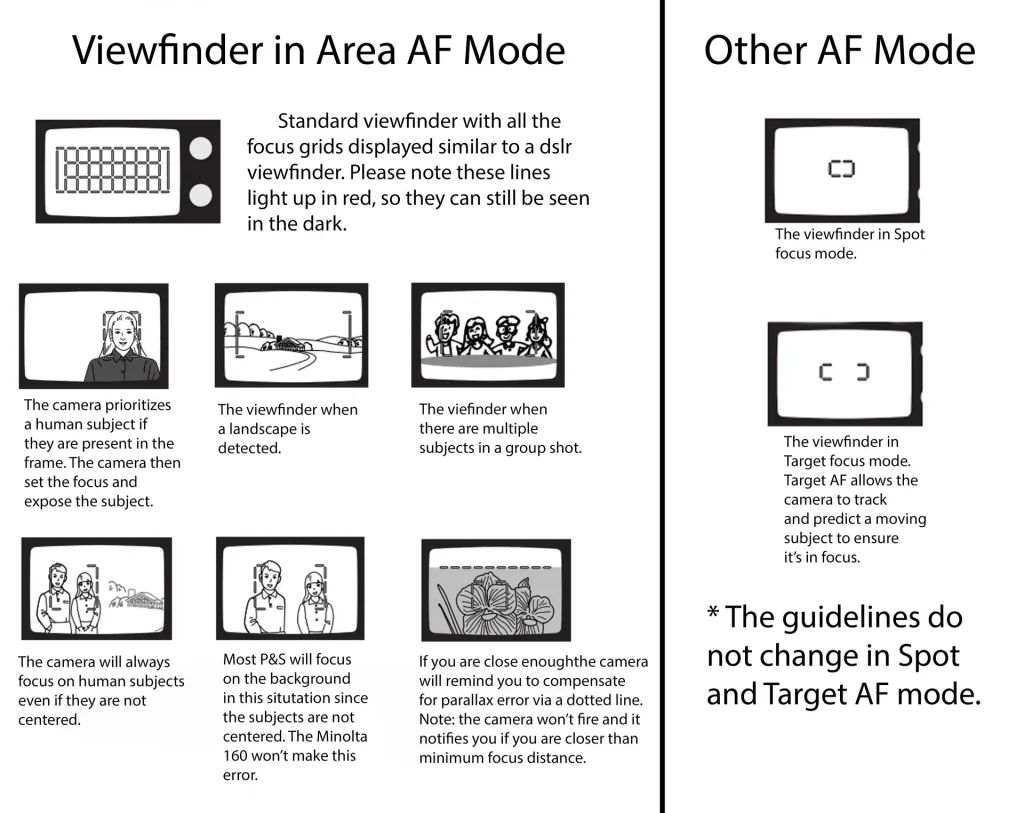
On the top of the camera there’s a button which you can use to select 3 focusing modes: Area AF, Spot AF, Target AF. With Area AF, the camera will detect subjects anywhere within the frame, Spot AF causes the camera to focus on the subjects in the center of the frame. Target AF is ideal for a moving subject as the camera will continue to track and predict where the moving subject is to ensure it’s in focus.
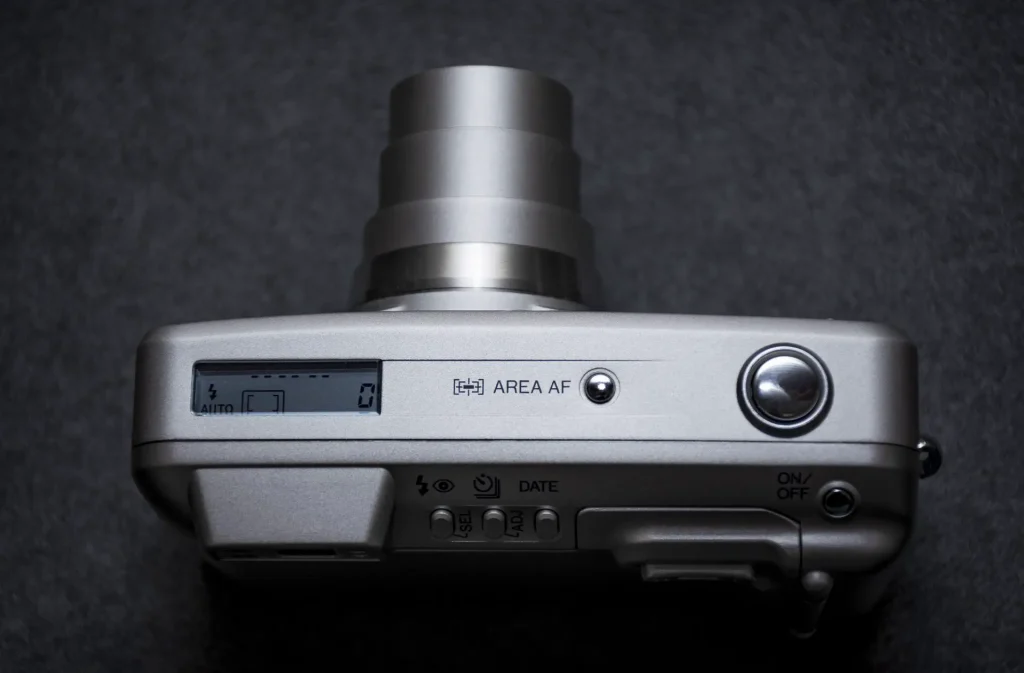
You can also hold down this button to select viewfinder display mode, this setting will be remembered even if the camera is turned off. This function lets you choose between: the AF guidelines will show up as you put the viewfinder up to your eye, AF guidelines only show up when the shutter button is half pressed (focus lock). The last option removes the AF guidelines completely, leaving you with a completely clear and unobstructed viewfinder.
The Lens’s Performance:
At first glance, the specifications of the lens do not impress, it starts at 37.5 mm which is not a satisfying number to begin with. But the lens extends to a good 160mm which puts it in the super-zoom category. I always hesitate on super-zoom cameras as the lens housing adds bulk to the body and there’s a belief that zoom lenses are not sharp especially on super-zooms. That’s my general assumption too, but all of that couldn’t be further from the truth as I started shooting with the Minolta Freedom Zoom 160.
The lens on this camera is incredible, it’s insanely sharp even at its maximum reach, and its sharpness is comparable if not exceeds some fixed lens compacts I have tested. Coupled with the state of the art focusing and metering system, all of my shots came out beyond what I had anticipated. The lens also exhibits pleasing contrast with almost no vignetting at all focal lengths. All the sample photos are shot on Kodak Gold 200 to give you a closer look at how the lens performs.


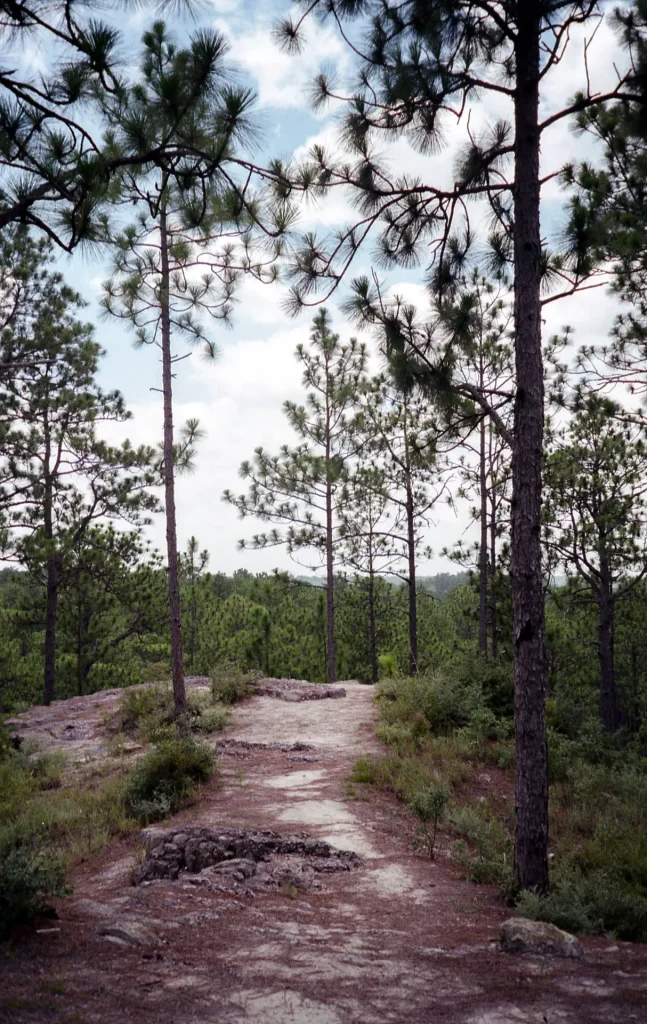



As you can see from the photos above, even though I used a low 200 iso in very poor lighting the camera managed to output very good exposure and sharpness handheld. Even in some photos I zoomed all the way in, the shake warning was lighting up, I took the shot anyway and it somehow came blur free with perfect exposure.
Final Thoughts on the Minolta Freedom Zoom 160
The long zoom range truly changed the way I take photos. Before I thought the long zoom was unnecessary but with the extra reach, I was able to compose photos with unique compositions that I couldn’t before with a fixed lens compact. Without a doubt, this camera has become my new favorite zoom shooter as I’ve had a lot of good shots with it. The Minolta Freedom 160 is perfect for anyone looking for a great super zoom camera but without the compromises of a zoom compact.
Another great alternative you should try out is the Canon Sure Shot Z155 which I have reviewed here. There’s also a model that’s very similar to this camera called the Konica Minolta Zoom 160c. This latter version was released after the Konica and Minolta merge, it’s identical to the Minolta Freedom Zoom 160. However, this downgraded model does not have the viewfinder eye start operation and it also lacks the Area AF. I also believe that the construction of the 160c is all plastic, but the lens, shutter speed are the same as the Minolta Freedom Zoom 160.
Share this post:
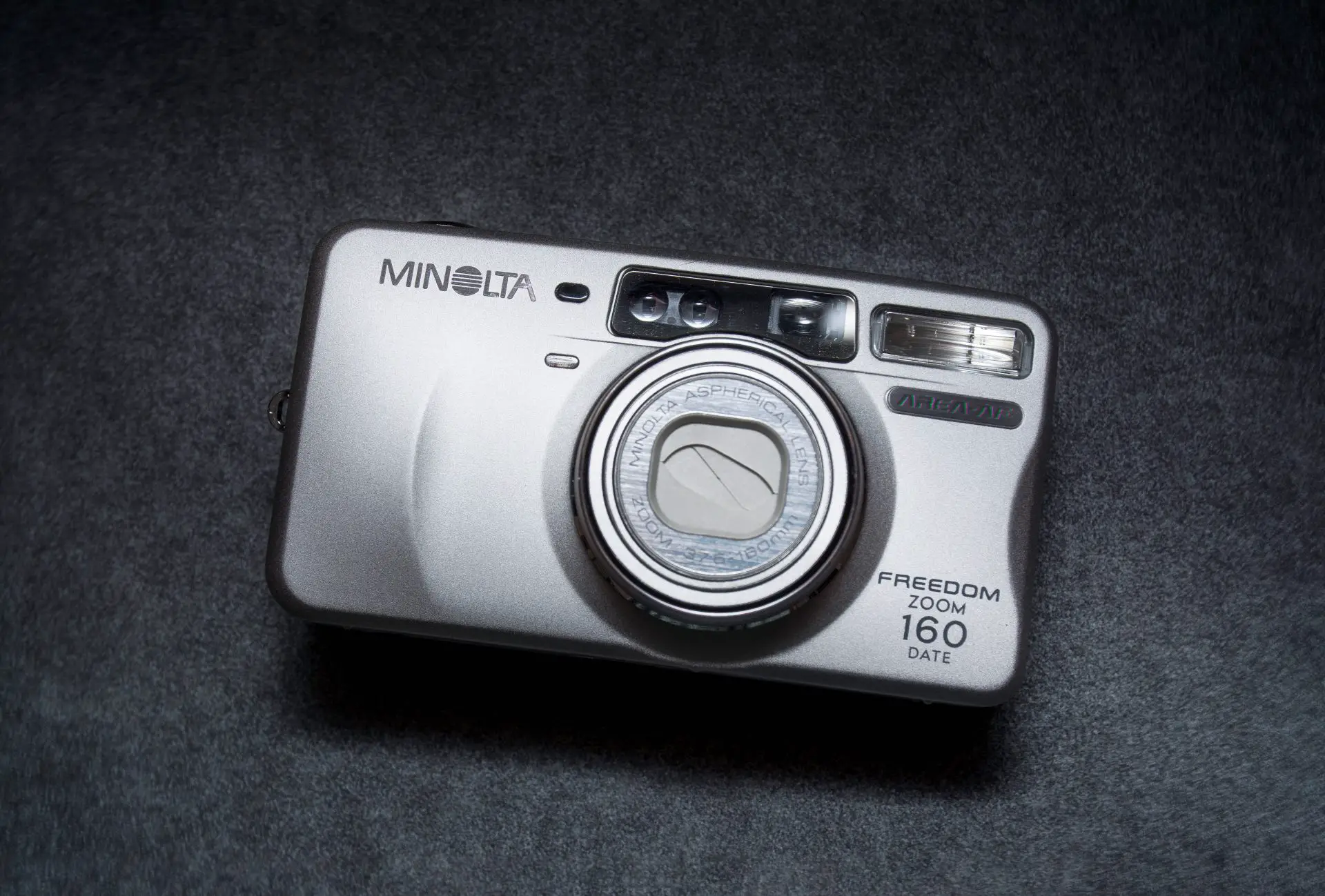



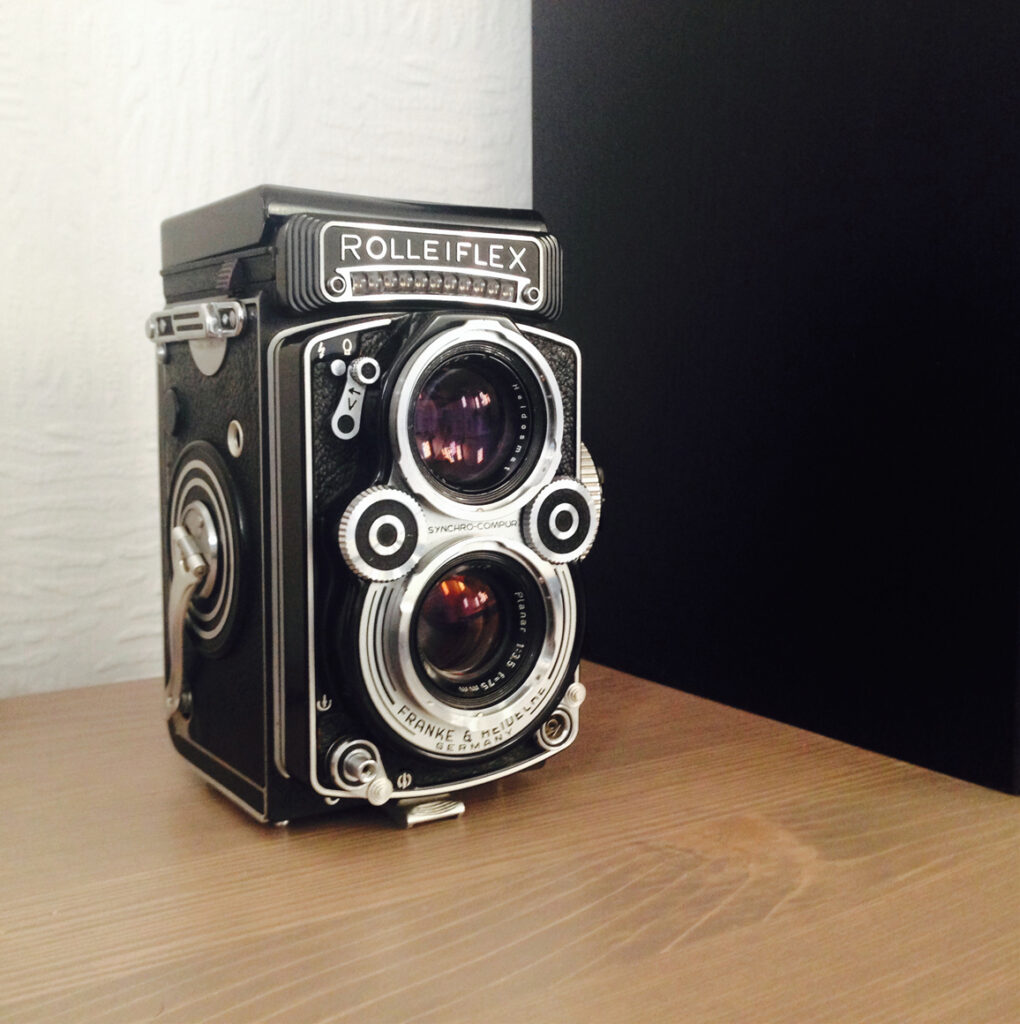




Comments
G V on Minolta Freedom Zoom 160 Date Review – A Highly Sophisticated Focusing System – By Thang Nguyen
Comment posted: 21/04/2021
Mats on Minolta Freedom Zoom 160 Date Review – A Highly Sophisticated Focusing System – By Thang Nguyen
Comment posted: 22/04/2021
I'm starting to really like the millenium compacts. Apart from the slow lenses most of the kinks had been worked out by then and they are all very compact.
I have the Riva zoom 115 and 130 and they both look very similar with that nice metal body. And both have some similar specs too, like the 6-element lens that starts at f/5.4. But they lack the area focus and advanced viewfinder. The 160 must have been top of the line in this series. My main gripe with both the 115 and the 130 is the very slow flash recycle times and that the camera locks up while recycling. Other than that they are very responsive and the autofocus seems bang on. They feel almost identical in use but the 130 has a few more features. There is also the very similar Minolta 110 Zoom Date (no Freedom or Riva in the name) used famously by Chinese artist Ren Hang. I think this is a slightly later modell, after the merger with Konica. It also has a different lens set-up with 4 elements instead of 6. But his images speak for themselves as far as lens sharpness and flash metering goes.
Is the 160 the same size as it's siblings or slightly chunkier? I really like the size and build quality of these cameras.
Comment posted: 22/04/2021
Comment posted: 22/04/2021
billaj on Minolta Freedom Zoom 160 Date Review – A Highly Sophisticated Focusing System – By Thang Nguyen
Comment posted: 22/04/2021
Comment posted: 22/04/2021
The Final Three Cameras – Earth, Sun, Film on Minolta Freedom Zoom 160 Date Review – A Highly Sophisticated Focusing System – By Thang Nguyen
Comment posted: 02/06/2021
Minolta Freedom Zoom 160: (Yet) another millenium compact – Urban Adventure League on Minolta Freedom Zoom 160 Date Review – A Highly Sophisticated Focusing System – By Thang Nguyen
Comment posted: 09/07/2021
Nhat Nguyen on Minolta Freedom Zoom 160 Date Review – A Highly Sophisticated Focusing System – By Thang Nguyen
Comment posted: 17/07/2021
Comment posted: 17/07/2021
Found Film: A Peek into Someone Else's Past - By Shawn Granton - Daily Updates Online on Minolta Freedom Zoom 160 Date Review – A Highly Sophisticated Focusing System – By Thang Nguyen
Comment posted: 10/10/2021
VMLP 17: Minolta Freedom Zoom 160—A Tiny, Capable P&S – Earth, Sun, Film on Minolta Freedom Zoom 160 Date Review – A Highly Sophisticated Focusing System – By Thang Nguyen
Comment posted: 24/11/2021
Howard Patterson on Minolta Freedom Zoom 160 Date Review – A Highly Sophisticated Focusing System – By Thang Nguyen
Comment posted: 20/08/2023
Howard Patterson on Minolta Freedom Zoom 160 Date Review – A Highly Sophisticated Focusing System – By Thang Nguyen
Comment posted: 20/08/2023
https://www.collection-appareils.fr/x/html/appareil-7117-Minolta_Riva Zoom 140.html